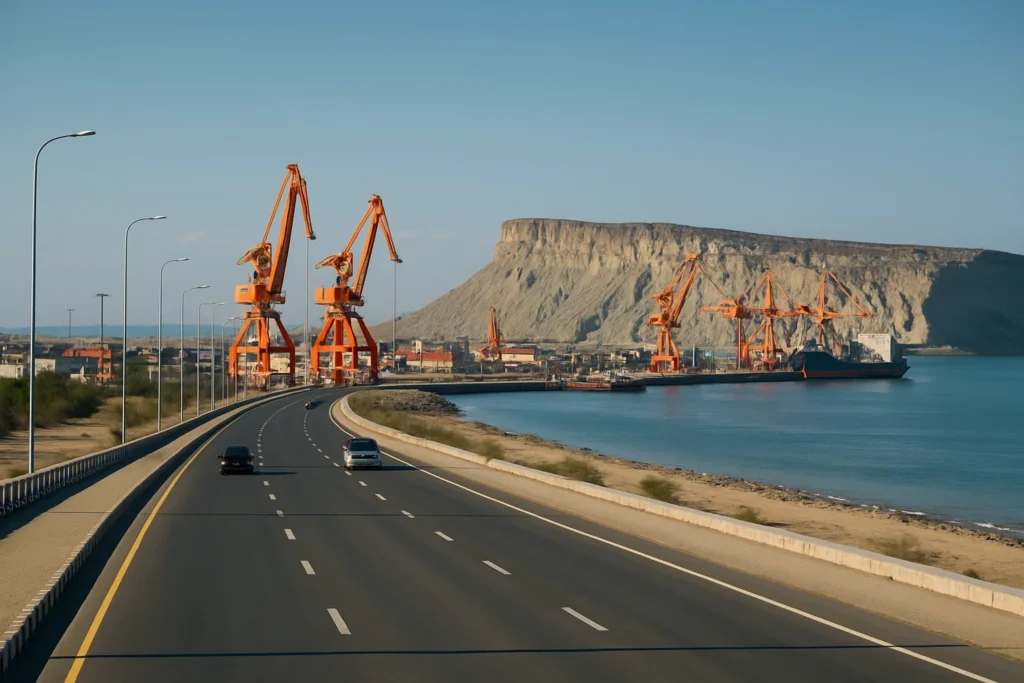
The China-Pakistan Economic Corridor (CPEC) stands as a cornerstone of regional development and connectivity, linking China’s western region to Pakistan’s Gwadar Port. While CPEC has primarily been viewed through a bilateral lens between China and Pakistan, its strategic significance extends far beyond. With the potential integration of Afghanistan into the corridor, CPEC could evolve into a broader regional connectivity framework that reshapes the economic and geopolitical landscape of South and Central Asia.
Afghanistan: The Gateway to Central Asia
Afghanistan’s geographic position makes it a natural bridge between South Asia, Central Asia, and the Middle East. As a landlocked country, its economic prosperity is tightly interwoven with its access to transit routes. Integrating Afghanistan into the CPEC framework would not only open new trade avenues for the country but also serve as a vital link in regional trade chains, facilitating greater interconnectivity and economic cooperation across borders.
CPEC as a Catalyst for Regional Transit Trade
CPEC is more than a series of infrastructure projects—it is a blueprint for regional integration. Roads, railways, pipelines, and fiber-optic networks developed under CPEC can significantly reduce the cost and time of transporting goods across the region. For Afghanistan, this means streamlined access to Pakistani ports like Gwadar and Karachi, allowing for efficient import and export operations.
Enhanced connectivity through CPEC can help integrate Afghan markets with those of Pakistan, China, and eventually the broader Central Asian Republics. This would create a seamless corridor for the movement of goods, services, and people, fostering economic growth and political stability across the region.
Role of Pakistan and NLC in Transit Facilitation
Pakistan, particularly through the efforts of organizations like the National Logistics Corporation (NLC), plays a pivotal role in making transit trade a reality. As the backbone of Pakistan’s logistics and supply chain operations, NLC has already developed robust infrastructure and services to support cross-border movement. With a focus on modernization and digital transformation, NLC is poised to handle the increased logistical demands that a transit trade route through Afghanistan would bring.
From integrated border terminals to fleet expansion and advanced tracking systems, NLC is streamlining trade operations to meet international standards. These advancements not only enhance the efficiency of transit trade but also build trust with regional partners.
Economic and Geopolitical Implications
Integrating Afghanistan into the CPEC framework could have profound economic and geopolitical implications. Economically, it would allow Afghanistan to diversify its trade partnerships, reduce dependency on a single route, and generate much-needed revenue from transit fees. It would also encourage investment in infrastructure and industries within Afghanistan, creating jobs and promoting stability.
Geopolitically, Afghanistan’s inclusion in CPEC could foster stronger regional alliances. It would position the country as a critical transit hub, increasing its strategic importance and encouraging collaboration rather than conflict. For Pakistan and China, a stable and economically viable Afghanistan ensures smoother implementation of regional initiatives and reduces security risks along trade routes.
Challenges to Overcome
Despite the promising prospects, several challenges remain. Security concerns in Afghanistan, political instability, and lack of infrastructure are significant hurdles. There is also a need for harmonized customs procedures, standardized documentation, and legal frameworks to facilitate seamless transit across borders.
Regional stakeholders must commit to collaborative policies, transparency, and long-term investment strategies. Continued international support and regional dialogue are essential to address these issues and build a sustainable transit trade network.
Conclusion
CPEC has already begun to transform the regional landscape of South Asia. By integrating Afghanistan into this transformative initiative, the potential for regional trade and cooperation can be exponentially expanded. With Pakistan and institutions like NLC taking the lead in facilitating logistics and infrastructure, and with continued collaboration among regional actors, CPEC can truly become a corridor of peace, prosperity, and progress for the entire region.
The future of regional connectivity lies not just in the construction of roads and railways, but in the building of trust, cooperation, and shared vision. Integrating Afghanistan into the CPEC network is a strategic move in this direction—one that promises lasting impact for generations to come.




